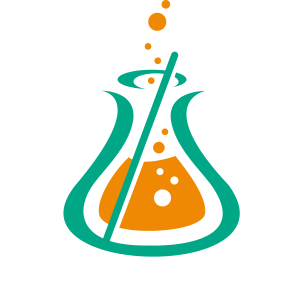Pigment and Artifact Pigment Removal
SOLUTIONS:
| 250 ml | 500 ml | 1 Liter | 4 Liters | |
| Melanin Pigment Removal | ||||
| Potassium Permanganate 0.25%, Aqueous | Part 133931A | Part 133931B | ||
| Oxalic Acid 5%, Aqueous | Part 1293A | Part 1293B | ||
| Mercury Pigment Removal | ||||
| Melanin Control Slides | Part 4430 | |||
| Iodine, Gram, Aqueous OR Iodine, Lugol’s, Aqueous |
Part 1140A OR Part 12092A |
Part 1140C OR Part 12092B |
Part 1140E | |
| Sodium Thiosulfate 5%, Aqueous | Part 1389A | Part 1389B | ||
| Formalin Pigment Removal | ||||
| Picric Acid, Saturated Alcoholic | Part 1337A | Part 1337B |
For storage requirements and expiration date refer to individual product labels.
APPLICATIONS:
Newcomer Supply Pigment and Artifact Pigment Removal Technical Memo provides procedures for removal of pigments, both naturally occurring and artifact, from tissue sections.
Melanin pigment naturally occurs and is produced by melanocytes that provides skin, hair and eyes with color. When melanin pigment obscures cellular detail, it can be bleached with potassium permanganate and oxalic acid solutions.
Artifact pigments are produced in tissues during processing, often a result of fixation. Microscopically, these pigments usually appear to lie on top of the tissue and not within the cell.
- Mercury pigment is deposited after exposure to fixatives containing mercuric chloride. Sections must be treated for mercury pigment removal prior to staining.
- Formalin pigment results when acidic formalin solutions react with blood rich tissues such as spleen and areas of hemorrhage, forming brown or brownish-black crystalline birefringent substances. The use of Formalin 10%, Phosphate Buffered (Part 1090) assists in minimizing formalin pigment deposition.
METHOD:
Technique: Paraffin sections on adhesive slides
-
-
- See Procedure Note #1.
-
Solutions: All solutions are manufactured by Newcomer Supply, Inc.
PROCEDURES:
-
- Deparaffinize sections thoroughly in three changes of xylene, 3 minutes each. Hydrate through two changes each of 100% and 95% ethyl alcohols, 10 dips each. Wash well with distilled water.
- Melanin Pigment Removal:
-
- Two Melanin Control Slides (Part 4430) and two patient slides are needed.
- Label one control slide and one patient slide “with”.
- Label the other control slide and patient slide “without”. Set aside for Step h.
- Bleach “with” sections in Potassium Permanganate 0.25% Aqueous (Part 133931) for 5 to 20 minutes.
- Rinse in several changes of distilled water.
- Clear in Oxalic Acid 5%, Aqueous (Part 1293) for 1-2 minutes or until sections turn white.
- Wash in gently running tap water for 10 minutes.
- Stain as desired; including untreated melanin control and untreated patient slides labeled “without”.
- See Procedure Note #2.
-
-
- Mercury Pigment Removal:
-
- Treat sections with Iodine, Gram, Aqueous (Part 1140) or Iodine, Lugol’s, Aqueous (Part 12092) for 10 minutes.
- Wash briefly in running tap water.
- Place in Sodium Thiosulfate 5%, Aqueous (Part 1389) for 3 minutes.
- Wash in gently running tap water for 10 minutes.
- Stain as desired.
-
- Formalin Pigment Removal:
-
- Treat sections with Picric Acid, Saturated Alcoholic (Part 1337) for 10 minutes to 3 hours.
- Wash in gently running tap water for 10 minutes.
- Stain as desired.
- See Procedure Note #3.
-
- Mercury Pigment Removal:
PROCEDURE NOTES:
-
- Pigment removal procedures are harsh on tissues sections. The use of adhesive slides (Part 5070, 5079 or 6203) is recommended to ensure tissue adherence.
- The darker the melanin pigment the longer bleach will take to decolorize the pigment.
- Timing to remove formalin pigment will vary and will depend on the amount of pigment present in the sections.
REFERENCES:
-
- Bancroft, John D., and Marilyn Gamble. Theory and Practice of Histological Techniques. 6th ed. Oxford: Churchill Livingstone Elsevier, 2008. 252-253.
- Carson, Freida L., and Christa Hladik. Histotechnology: A Self-Instructional Text. 3rd ed. Chicago, Ill.: American Society of Clinical Pathologists, 2009. 23-24, 254-255.
- Sheehan, Dezna C., and Barbara B. Hrapchak. Theory and Practice of Histotechnology. 2nd ed. St. Louis: Mosby, 1980. 130, 214, 220-221.
- Modifications developed by Newcomer Supply Laboratory.


